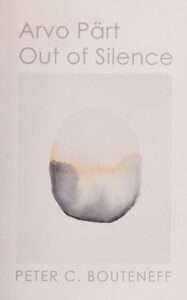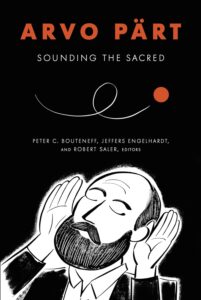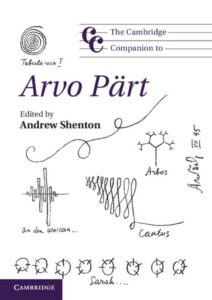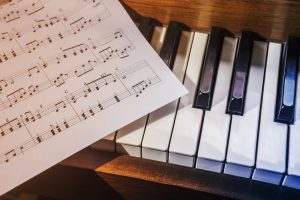Table of Contents
Come join us now, and enjoy playing your beloved music and browse through great scores of every level and styles!
Can’t find the songbook you’re looking for? Please, email us at: sheetmusiclibrarypdf@gmail.com We’d like to help you!
Arvo Pärt: Für Anna Maria, Complete Piano Music
Für Alina (1976) · Jeroen van Veen Arvo Pärt: Für Anna Maria, Complete Piano Music ℗ Brilliant Classics Released on: 2014-08-01 Composer: Arvo Pärt Music Publisher: Brilliant Classics Piano: Jeroen van Veen

Best Sheet Music download from our Library.
Please, subscribe to our Library.
If you are already a subscriber, please, check our NEW SCORES’ page every month for new sheet music. THANK YOU!
Who is Arvo Pärt?
Biography
More about Arvo Pärt
Arvo Pärt was born in 1935 in Paide, Estonia, only four years before the State became part of the USSR. He studied piano, flute, oboe and percussion before turning twenty, age in which he made his first compositional attempts.

In 1954, he began his higher training in composition, at the Tallin Conservatory, which he had to interrupt for mandatory military service. He graduated in 1963, with formal maturity reflected in his symphony No. 1 (1963), while working as a sound engineer on the state radio. Some of the pieces he composed during his student years still remain in their official catalog, including orchestral pieces such as Nekrolog (1960) or Perpetuum Mobile (1963): “A good number of extraordinary works”, the result of its “deep exploration of the vocabulary Modernist ”, in the words of the president of the jury, Paul Hillier, artistic director of Theater of Voices (Denmark).
At the end of the sixties, his music stands out for a very personal use of the collage technique , although darker and more dramatic, together with a great influence of the baroque tradition, in compositions that reflect an inner struggle between two world opposed worlds . The maximum expression of this inner dialogue is Credo (1968), which was a turning point in his work and in his life.

The premiere of Creed was a real event for the audience, which cheered the piece until it was interpreted entirely once again. The Soviet state considered the work and its creator for its innovative spirit and for echoing a spiritual and sensitive vision capable of resonating with the audience.
Pärt plunged into a return to the origins through the study of Christian vocal music, the Gregorian song, the Nôtre Dame school and the Renaissance polyphony. In those years two personal events of great meaning occur in his life: his marriage to Nora, his inseparable partner since then, and his official income into the Orthodox Church.
His own path: the tintinnabuli
His production in those years was scarce, although with some relevant creation, such as his symphony No.3 (1971). In 1976, with a small piano piece, Für Alina , Pärt evidently shows that he has found his own voice.
The two worlds that Pärt had been exploring for some time expressed perfectly in the creation of a new technique: the tintinnabuli . Two intertwined musical lines, devoid of any accessory element. The artistic director of the Grand Theater of the Liceo de Barcelona, Víctor García de Gomar, secretary of the jury, defines it as “the invention of a sound grammar that makes it unmistakable, which presents repetitive cells of a certain containment, chords that overlap one on top On the other, so that each change is almost a miracle, they are subtle, but they modify their color so that it changes all the meaning of what was being built. ”
Since then, Pärt has maintained a relationship of more than forty years with that technique that he himself invented, which he has developed and in which he has supported his entire creation. The birth of that new language led him to a very prolific year, 1977, in which he composed some of his most interpreted works: Cantus in Memory of Benjamin Britten, Fratres, Summa and Tabula Rasa. A “personal and communicative language that has fascinated the most demanding audiences, as well as a large audience. His music is admired, recognized and interpreted by the greatest musical and cultural institutions worldwide ”, in the words of the teacher Pedro Halffter Caro, a member of the jury.
The human voice as a perfect instrument
The premiere of Tabula Rasa was an event again, this time in Tallin, which opened the doors to broad international recognition. His growing influence and reception by the public, his highly individual artistic voice and his religiosity were seen by the Soviet regime as a threat. The regime’s interference attempts led Pärt to publicly express their disagreement. He was arrested at the Moscow airport by dissident, the media began to call him “traitor to the country” and, finally, the Soviet authorities recommended leaving Estonia.
He was exiled with his family in January 1980, first to Vienna and later to Berlin, where he lived for almost thirty years, while in Estonia the live interpretations of his works were prohibited.
For Pärt, the textual element is enormously important, something that becomes evident even in its instrumental pieces, where there is a great load of the word, almost always from liturgical texts or religious prayers. However, it is his vocal music that in a more powerful way collects that predilection for the textual – repeatedly has affirmed that the human voice is the most perfect instrument – and the one that has led him to gain the great recognition.
Germany was a new period, extraordinarily fruitful, in the production of Pärt, in which his professional relationship with Manfred Eicher played, whom he met in 1984. The founder and producer of the ECM Records label converted a new recording of Tabula Rasa in the first title of a successful series of recordings, which took Pärt’s music to everyone. His pieces began to be included in the programs of many of the most prestigious international festivals, orchestras and ensembles, as well as radio and television programs.
Estonia recovered his independence in 1991, and Pärt restored his relationship with the country, both personal and artistically. His music was interpreted regularly, and the places where he lived in his youth usually offer tributes on his birthday. In 2010, Pärt definitely returned to Estonia, where he has lived since then. That same year, he and his wife Nora founded the Arvo Pärt center, whose objective is to create and maintain the rich personal archive of the composer and, in parallel, officiate as a meeting place for musicians, researchers and lovers of the musical universe.
“Arvo Pärt, who builds music of great purity and spirituality, represents an oasis of rest in an oversaturated world of technologies. His music is an invitation to transcend individuality, ”says Víctor García de Gomar. “Reserved and generous, he has always wanted to be close to people, of the human being, and has not hesitated to put his art at the service of great tragedies.” The jury secretary refers to the work of Pacem Domine (“We thank you, Lord”), written by Pärt two days after the 2004 11-M attacks in Madrid, a six-minute choral prayer that the composer He dedicated to the 192 dead.
Pärt’s music has reached the widest audiences. “Recognized for its depth and sensitivity for both believers and non-believers,” says Robert Sholl , music professor at the University of West London (United Kingdom) and a member of the jury.
As highlighted in the act, “it is not exaggerated to say that Pärt’s work is constantly interpreted throughout the world.” His versatility and expressiveness has also found his own space in the cinema: his pieces accompany hundreds of films, including those of Paolo Sorrentino, Víctor Erice and David Trueba. Two albums from the Estonian composer have won two Grammy Awards. For eight years, the most extensive database of live interpretations of classical music, that of Bachtrack magazine , places him as the most interpreted contemporary composer in the world.
Browse in the Library:
Or browse in the categories menus & download the Library Catalog PDF:
